Meeting of the Environment and Integrated Catchments
Committee
Date: Wednesday 4 December 2019
Time: 9.00am
|
Venue:
|
Council Chamber
Hawke's Bay Regional Council
159 Dalton Street
NAPIER
|
Agenda
Item Subject Page
1. Welcome/Notices/Apologies
2. Conflict
of Interest Declarations
3. Call for Minor
Items of Business Not on the Agenda 3
Decision Items
4. Confirmation of
the Environment and Integrated Catchments Committee Terms of Reference 5
Information or Performance Monitoring
5. Pandora Pond Water
Quality Monitoring 9
6. Right Tree Right
Place 13
7. Discussion of
Minor Items Not on the Agenda 81
HAWKE’S BAY REGIONAL COUNCIL
Environment
& Integrated Catchments Committee
Wednesday 04 December 2019
Subject: Call for Minor Items of
Business Not on the Agenda
Reason
for Report
1. Hawke’s Bay Regional Council Standing order 9.13 allows
“A meeting may discuss an item
that is not on the agenda only if it is a minor matter relating to the general
business of the meeting and the Chairperson explains at the beginning of the
public part of the meeting that the item will be discussed. However, the
meeting may not make a resolution, decision or recommendation about the item,
except to refer it to a subsequent meeting for further discussion.”
Please note that nothing in this standing order removes
the requirement to meet the provisions of Part 6, LGA 2002 with regard to
consultation and decision making.”
Recommendations
That the Environment and Services Committee accepts the following
“Minor Items of Business Not on the Agenda” for discussion as Item
7.
|
Leeanne Hooper
GOVERNANCE LEAD
|
James Palmer
CHIEF EXECUTIVE
|
HAWKE’S BAY REGIONAL COUNCIL
Environment
and Integrated Catchments Committee
Wednesday 04 December 2019
Subject: Confirmation of the
Environment and Integrated Catchments Committee Terms of Reference
Reason for Report
1. This item
provides the proposed Terms of Reference for the Environment & Integrated
Catchments Committee (EICC) for the 2019-22 Triennium for Council’s
adoption.
Officers’ Recommendation(s)
2. Council
officers recommend that the Terms of Reference proposed (attached) is
confirmed, with the inclusion of any amendments agreed at the meeting. The
terms of reference provide for the EICC’s oversight of:
|
Environment & Integrated Catchments (Place
Based)
|
|
Asset management
|
|
Biosecurity
|
|
Climate change and carbon reduction
policies
|
|
Environmental
science, including State of the Environment monitoring
|
|
Engineering
|
|
Catchment Services
|
|
Water Advisory
Services & Water Information Services
|
|
Maritime
Navigation & Safety
|
|
Open Spaces and
Regional Parks
|
|
Reporting
including:
· Sustainable Homes (incl Clean Heat) Scheme
· Erosion Control Scheme
|
Executive Summary
3. In response to
feedback provided by councillors at the 6 November 2019 Regional Council
meeting, staff have amended the Terms of Reference for the Environment
and Integrated Catchments Committee initially proposed by:
3.1. including the climate change
and carbon reduction policy work in the terms of reference for the EICC
3.2. moving oversight of the
consents and compliance functions (Regulation) into the Corporate and Strategic
Committee terms of reference.
Background
4. In previous triennia, the Environment and (Services) Integrated
Catchments Committee has considered aspects of Council’s operational
environmental functions including:
4.1. resource management
4.2. flood protection and drainage
asset management
4.3. regulatory responsibilities
4.4. environmental performance
trends and State of the Environment environmental monitoring
4.5. reviewing responses to emerging
and significant environmental issues.
Decision Making
Process
5. Council and its committees are required to make every decision in
accordance with the requirements of the Local Government Act 2002 (the Act).
Staff have assessed the requirements in relation to this item and have
concluded:
5.1. Council is required to (LGA
sch.7 cl.19(1)) hold the meetings that are necessary for the good government of
its region
5.2. Council may appoint (LGA sch.7
cl. 30(1)(a)) the committees, subcommittees, and other subordinate
decision-making bodies that it considers appropriate
5.3. Given the
provisions above, Council can exercise its discretion and make these decisions
without consulting directly with the community or others having an
interest in the decision.
|
Recommendations
1. That the Environment and Integrated Catchments Committee:
1.1. Receives and considers the “Confirmation of the
Environment and Integrated Catchments Committee Terms of Reference”
staff report
1.2. Confirms the Terms of Reference for the Committee, including
amendments agreed at the 4 December 2019 meeting.
2. The Environment and Integrated Catchments Committee recommends
that Hawke’s Bay Regional Council:
2.1. Agrees that the decisions to be made are not significant and that
Council can exercise its discretion and make these
decisions without consulting directly with the community or others having an
interest in the decision.
2.2. Adopts the Terms of Reference for the Environment
and Integrated Catchments Committee, incorporating amendments agreed by the
Committee at its 4 December 2019 meeting, for the 2019-22 triennium as
follows.
Insert text of agreed ToR
|
Authored by:
|
Leeanne
Hooper
Governance Lead
|
|
Approved by:
|
James Palmer
Chief Executive
|
|
Attachment/s
|
⇩1
|
Environment
& Integrated Catchments Committee Terms of Reference for Confirmation
|
|
|
|
Environment
& Integrated Catchments Committee Terms of Reference for Confirmation
|
Attachment 1
|


HAWKE’S BAY REGIONAL COUNCIL
Environment
and Integrated Catchments Committee
Wednesday 04 December 2019
Subject: Pandora Pond Water
Quality Monitoring
Reason for Report
1. This report provides an update to councillors on the water quality
in Pandora Pond, Ahuriri.
Executive Summary
2. Water quality entering the Ahuriri Estuary is managed by
Hawke’s Bay Regional Council in accordance with the Resource Management
Act.
3. The science programme is run by the Integrated Catchment Management
Group as part of the Marine and Coast team and contributes to the
Council’s strategic goals of swimmability and contaminant reduction.
Background
4. The Ahuriri Estuary Napier, is a significant ecological and
recreational resource for the Hawke’s Bay community. It is recognised as
a nationally significant wildlife and fisheries habitat, and a nationally
important example of tectonic processes. Natural and human induced
changes to the estuary over the last century have considerably changed the
estuary form.
5. As one of the few sheltered, tidal lagoon estuaries within
Hawke’s Bay, Pandora Pond provides for a number of recreational
opportunities including swimming, kayaking, sailing and waka ama.
6. The health of people undertaking these activities may be compromised,
however, by the presence of faecal contaminants that have the potential to
cause illness. These may enter the estuary from sources such as
stormwater, overland flow or sewage discharges.
7. During the 2017-18 and 2018-19 summer period, a number of samples of
faecal indicator bacteria exceeded national guidelines for contact recreation.
8. Concern was also raised that this was linked to health impacts, and
exceedances also resulted in the Iron Māori
cancelling the swim part of the course in 2018.
9. This purpose of this report is to provide Council with the updated
information relating to water quality of the Pandora Pond, and work that has
been undertaken to increase our understanding of potential health risks.
Discussion
10. Microbiological
water quality monitoring has been undertaken for Pandora Pond since before
2000. This sampling is undertaken in line with national guidelines on
microbiological water quality for marine and freshwater recreation areas
(2002).
11. Water
samples are analysed for the faecal indicator bacteria Escherichia coli (E.
coli) in freshwater, enterococci in saline waters, and both indicators in
brackish waters. These bacteria are not illness causing in themselves,
however have been correlated with the presence of pathogens associated with
faeces in water that can cause illness.
12. In
previous reports Pandora Pond has been described as ‘Fair’ for
recreational activities (Madarasz-Smith, 2014). This rating indicates
that the area is ‘Generally satisfactory for swimming, though there are
many potential sources of faecal material. Caution should be taken during
periods of high rainfall, and swimming avoided if water is discoloured’.
13. Between
2000-01 and 2018-19 E. coli was monitored 263 times in Pandora Pond with
nine exceedances (97% compliance with guidelines). Eight of the nine
exceedances (89%) occurred between 2017 and 2019. During 2017-2019
compliance with guidelines was 90%.
14. Between
2000-01 and 2018-19 enterococci was monitored 286 times in Pandora Pond
with 17 exceedances (94% compliance with guidelines). Eleven of the 17
exceedances (65%) occurred between 2017 and 2019. During 2017-2019
compliance with guidelines was 86%.
15. Given the
Pond’s high usage and results that indicate a higher rate of exceedances of
health guidelines in recent years, HBRC commenced a programme looking at how we
can improve our monitoring and communication around health risks for people
using the Pond. The programme also aims to identify the source/s of faecal
material to better guide management.
16. In 2018
HBRC successfully gained funding through Envirolink to lease a ColiMinder™ from NIWA. The ColiMinder™ uses enzyme activity as a
proxy for faecal indicator levels but can produce a result in 15 mins compared
to 24 hours for current methods.
17. A
comprehensive monitoring and investigation project was undertaken between
January and May 2019.
18. Over 700
samples were collected and analysed using the ColiMinder™. Paired samples were also analysed
using traditional methods, and environmental data on rainfall, tides, salinity
and turbidity were also collected.
19. Correlations
between traditional and ColiMinder™ analyses were not observed, nor were correlations between
environmental data and ColiMinder™ results. Data
mining may elucidate relationships that are not obvious.
20. Faecal
source analyses indicate the presence of bird faeces in dry weather periods,
followed by ruminant sources during wet weather.
21. Sheep and
cow faeces was detected from the Thames/Tyne confluence.
Consultation
22. Communication
has been undertaken on the water quality of the Pandora Pond and wider Ahuriri
Estuary with a number of organisation and entities. This includes
previous HBRC committee meetings (Environment and Services Committee, Regional
Planning Committee), Mana Ahuriri, Te Komiti Muriwai o te Whanga, general
public through walk and talk series and school presentations.
Next
Steps
23. Staff are
working on an Envirolink application for NIWA to look at the data obtained
during the ColiMinder™
study and determine whether any further actions can be taken.
24. Monitoring
is continuing through the Recreational Water Quality Monitoring project,
catchment works are continuing through the Ahuriri environmental improvement
(previously Hotspots) programme, and consenting processes are underway for the
pumped drainage into the estuary.
25. Success
of this work needs to include the understanding that the area is within a
gazetted wildlife refuge, and that faecal material from birds is a part of the
system, and may in fact increase if work to improve habitat quality is
successful.
Considerations of
Tangata Whenua
26. Hapū
associated with Te Whanganui A Orotū have a strong affiliation with the
Ahuriri. Water quality issues are of importance to hapū in this
area.
Decision Making Process
27. Staff have assessed the
requirements of the Local Government Act 2002 in relation to this item and have
concluded that, as this report is for information only, the decision making
provisions do not apply.
|
Recommendation
That the Environment and Integrated
Catchments Committee receives the “Pandora
Pond water quality monitoring” staff report.
|
Authored by:
|
Anna
Madarasz-Smith
Team Leader/Principal Scientist Marine and
Coast
|
|
Approved by:
|
Dr Jeff Smith
Manager ScienCE
|
|
Attachment/s
There are no
attachments for this report.
HAWKE’S BAY REGIONAL
COUNCIL
Environment
and Integrated Catchments Committee
Wednesday 04 December 2019
Subject: Right Tree Right Place
Reason for Report
1. The “Right Tree, Right Place” (RTRP) project was initiated
by the previous Council, and executed by HBRIC with co-funding from Te Uru
Rakau/Forestry New Zealand, to examine afforestation opportunities for the
Hawke’s Bay region. The project has progressed to a point where the
timing is appropriate to discuss Council’s role in the broader regional
afforestation context. The importance of Council building clarity on its
role in afforestation investments, internal and community capacity building and
industry relationships relating to forestry, are key to a strategic discussion
on regional afforestation. In particular Council’s ability to
deliver the outcomes it seeks and the relationship between; fully grant funded,
public/private and fully commercial investments in delivering those outcomes is
important.
2. The
region faces significant challenges around the adverse impacts
of sediment, erosion and its response to the climate
change challenge. In addition there are opportunities
for carbon sequestration and regional carbon neutrality, as well as improved climate resilience. Diversification and inclusion of
more trees in the agricultural landscape can also lead
to reduced externalities, increased productivity and improved landscape biodiversity and function.
3. It
is also essential that Council build an
understanding of the environmental, community, economic
and associated wood flow and processing implications of any programme of
investment. These factors have also been addressed in the RTRP work to
date.
Discussion
4. Over
the next two to three decades planting trees will be critical to achieving a
range of outcomes within the Hawke’s Bay region. As a result of
this, planting trees is likely to see significant investment by a range of
investors. This investment is already occurring now through investments such
as the Council’s $30m Erosion Control Scheme (ECS) funding, the One
Billion Trees central government funding and private investment ranging from
large-scale plantation forestry conversions to on-farm riparian planting.
5. Within
Hawke’s Bay, Council initially identified 252,000ha of the region as a
priority for consideration for planting, to reduce areas of worst soil erosion
and highest sediment yield. Of this, a 100,000ha planting programme is
predicted by Council modelling to reduce sediment yield from this most eroding
land by as much as 50%. There is
expected to be around 20,000 ha planted by grant
funding initiatives directly supported by Council such as through the Erosion
Control Scheme. This
regional context represents significant challenges,
risks and opportunities. The “Right Tree, Right Place” (RTRP)
project is seeking to provide information to support quality decisions on the
future of our region’s planting programmes. However the strategic
context within which any afforestation investments will need to be established
by Council.
6. The
RTRP project has identified that complementarity of Council driven, diversified
afforestation activity with pastoral farming will be essential. Processes
around farm environment management planning, arising
principally from freshwater reform, will drive key interventions. It will
be essential to build on, and in some cases start, conversations and develop
landowner understanding about afforestation options, and to build capacity in
catchment management teams to ensure maximum synergy with Erosion Control
Scheme and other Council and central government programmes. The social and human element of why people do/do not plant trees is
a critical part of the potential success of any Council investment in the RTRP.
7. To
effectively progress appropriate planting over the next few decades Council
needs to consider and agree its strategic approach to afforestation capacity,
relationships and investments. In the short term council needs to clearly
define what it believes its role is regarding forestry, where and how it
invests and how it supports the necessary capacity building and community
engagement to support uptake of any programme. This will be important to
guiding staff focus and priorities. In the longer term a regional
afforestation strategy outlining Council’s goals, investments,
integration with policy such as the NES for production forestry, how it works
with the forestry industry and other key stakeholders will be important.
Correct alignment with existing Council programmes on water, biodiversity and
climate will take considered design in order to be effective. Improving
landscape function requires multidisciplinary involvement. Clarity of
role will allow Council’s current direct investments in the Erosion
Control Scheme, the Tutira high UMF Manuka plantation, its current forest
estate and partnerships like the Kahutia Accord to be delivered within a
strategic context. A strategy will also guide potentially significant
future investments that may be considered. Ongoing engagement is
occurring between HBRC and Te Uru Rakau around on farm advisory capability and
this will also be integrated with RTRP as appropriate.
8. The
“Right Tree Right Place” (RTRP) project has delivered:
8.1 Key
spatial, forest systems, social research and other outputs for better regional
context and decision making on forestry investments over the next two decades
or more
8.2 Broad
financial indicators for different tree species and forest systems, site
suitability information with an associated range of assumptions and caveats
8.3 An
initial assessment of ecosystem benefits from afforestation with opportunity
for later integration with ecosystem prioritisation and biodiversity programmes
8.4 Base
information to allow meaningful of integration Council forestry activity with
the farming community, forest industry, infrastructure, and toward more
functional landscapes, resilient communities and robust economy
8.5 Co-funding
of the RTRP project to date has been 50:50 of up to $470K between HBRIC and Te
Uru Rakau/Forestry New Zealand with current project to close end December 2019
8.6 Summary
report from RTRP Project is included as Attachment 1.
9. While
it supports decision making, the RTRP project does not answer the strategic and
policy questions around Council’s role, investment focus and investment
willingness in regional afforestation.
10. Key questions
include:
10.1 How best to
integrate afforestation activity within the farming landscape to provide better
landscape function and business and community resilience?
10.2 Where and how does
Council invest to deliver the best outcomes?
10.3 Who manages which
investments? Is it Council, HBRIC, or another investment partner? Is this
different depending on the investment context?
10.4 What is
Council’s role relative to other potential investor roles? For example
should Council be putting its capital into investments that the commercial
market will fund i.e. the Pinus radiata market is working well, would
council invest in this?
10.5 What is the likely
quantum of investment and type of funding (grant, debt, investment portfolio)
to drive meaningful change in the agreed timeframe? What is the degree of
change sought?
10.6 What are the
returns expected from different classes of investment?
10.7 What is the
overarching strategic framework that guides current and future investments?
10.8 How should Council
engage with forest investment entities outside its own direct investment
strategy?
10.9 Where are the areas
where the market will not operate to plant the right trees and what is the
impact of this? What are the opportunities for public/private partnerships and
what might the nature and benefits of these be?
11. The answers to
these questions are critical to providing staff guidance and focus and would
support the development of a regional afforestation strategy and business
case. They will also be important to other investors and stakeholders as
to where the priority and focus will be for Council over the longer term.
12. The current
lack of a clear strategy for afforestation investment also increases the risk
that:
12.1 Outcomes desired by
the community will not be achieved
12.2 Investment will not
be targeted and optimised to deliver the best returns possible for its
investment context
12.3 Opportunities to
leverage additional funding will not be best utilised.
Next Steps
13. A series of
potential case studies have been identified to apply and test RTRP assumptions
and supporting information and package this for the farming community and catchment
management teams.
14. An exercise
will be run in parallel with further due diligence, in order to build
understanding of required resourcing and the necessary approaches for Council
to approach afforestation activities successfully.
15. Should council
believe it has a role, each investment area will require a significant due
diligence, development, and implementation process before Council is
potentially going to invest. The Erosion Control Scheme (ECS) is a good
example of this with 18-24 months from the initial discussions through to its
implementation in the field by staff. Significant resource was also
required for the ECS due diligence and should Council decide it has a role in
other large scale afforestation investments this resourcing will need to be
considered. For example the $47m Trees on Farms
investment which Council considered a decade ago cost around $400,000 over an
18 month due diligence.
16. It is proposed
that this further analytical and testing work be funded over the next twelve
months from existing council resources in Integrated Catchment Management and
the Erosion Control Scheme in the lead up to the 2021-2024 Long Term Plan. It
is intended that an Afforestation Strategy be developed for Council during this
time to inform the LTP. It will be important to develop this Strategy in
conjunction with the Council’s developing response to climate change and
central government’s inclusion of sediment attribute in the National
Policy Statement for Freshwater Management.
Strategic Fit
17. Regional
afforestation programmes or the “Right Tree in the Right Place” are
a critical part of delivering many of the key outcomes desired by our community
over the next 20-30 years. Increased biodiversity, reduced sediment and
nutrients in water and carbon sequestration, alongside other benefits, will
substantially be driven by planting programmes.
Considerations of
Tangata Whenua
18. There are a
range of potential positive benefits and some risks likely from a Tangata
Whenua perspective in regional afforestation investments. The Kahutia
Accord is an example of a partnership with Iwi in this area. Sediment in
freshwater bodies and the coastal environment is a master stressor and
detrimentally impacts upon taonga species with importance for mahinga kai and
cultural practice. Therefore afforestation is a key intervention for
addressing these impacts. Restoration of mauri and manawill also be a
significant outcome of appropriate afforestation activity and guidance will be
sought on how best to achieve such gains.
Financial and
Resource Implications
19. There are no
direct immediate financial and resource implications from this report.
Financial implications may arise when council has clarified what its role in
afforestation investments is, where /how it may invest, and the scale of
investment.
20. Any due
diligence into new investments in afforestation through public/private
partnerships or commercial mechanisms will require significant resourcing.
Decision Making
Process
21. Council is required to make every decision in accordance with the
requirements of the Local Government Act 2002 (the Act). Staff have assessed
the requirements in relation to this item and have concluded:
21.1 The
decision does not significantly alter the service provision or affect a
strategic asset.
21.2 The
use of the special consultative procedure is not prescribed by legislation.
21.3 The
decision does not fall within the definition of Council’s policy on
significance.
21.4 The persons
affected by this decision all persons with an interest in the region’s
management of natural and physical resources
21.5 The
decision is not inconsistent with an existing policy or plan.
22. Given the nature and significance of the issue to be considered and
decided, and also the persons likely to be affected by, or have an interest in
the decisions made, Council can exercise its discretion and make a decision
without consulting directly with the community or others having an
interest in the decision.
|
Recommendation
That the Environment and Integrated
Catchments Committee receives and considers the “Right
Tree Right Place” staff report.
|
Authored by:
|
Campbell
Leckie
Manager Catchment Services
|
James Powrie
RedAxe Forestry Intelligence
|
Approved by:
|
James Palmer
Chief Executive
|
|
Attachment/s
|
⇩1
|
Right Tree
Right Place Summary Report
|
|
|
|
Right
Tree Right Place Summary Report
|
Attachment 1
|












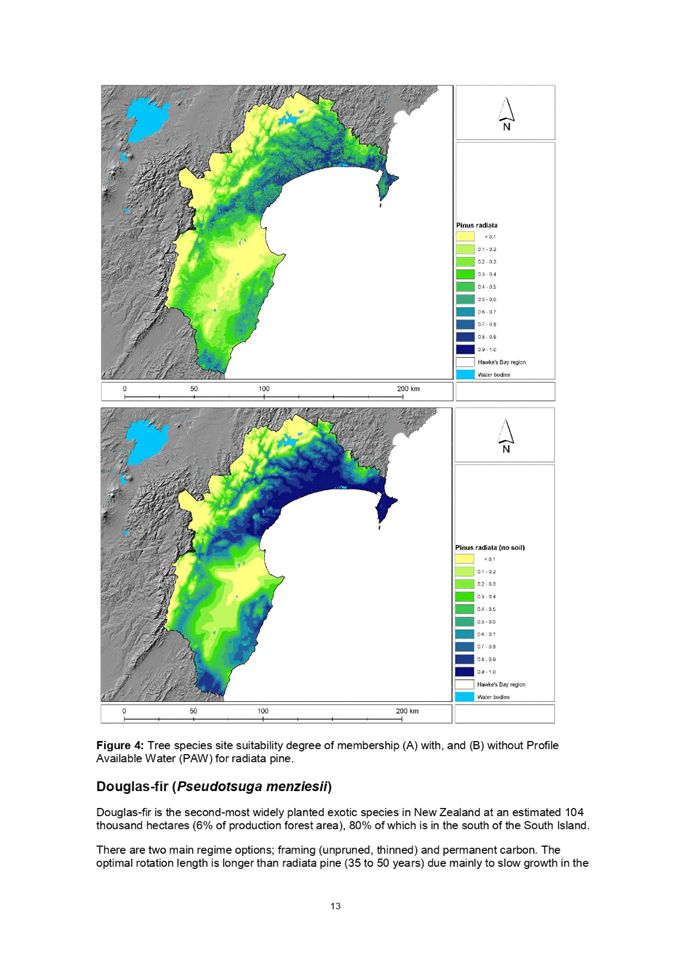
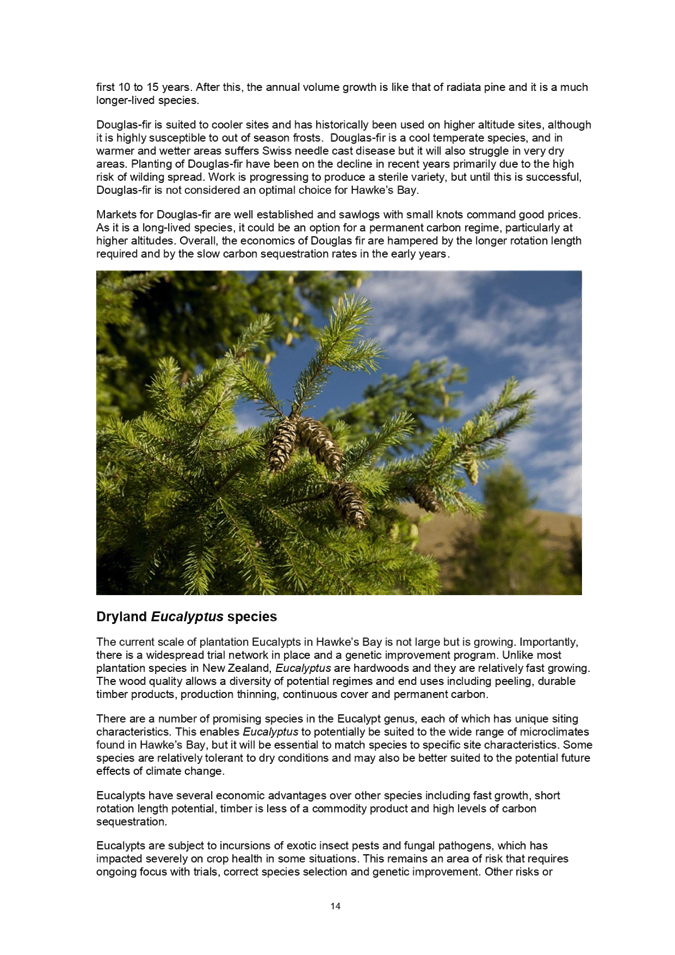
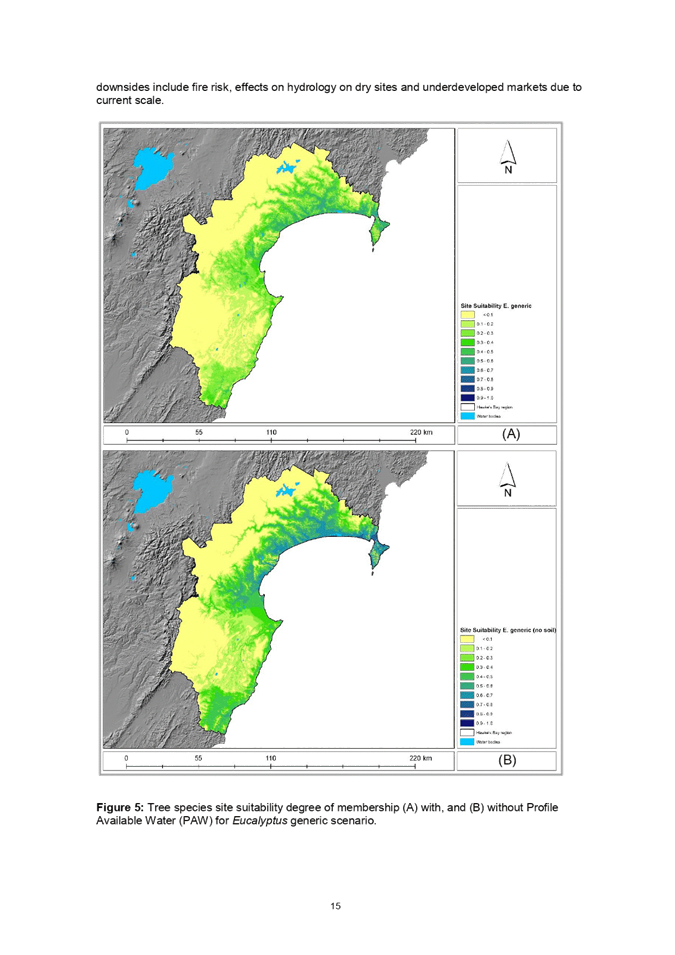
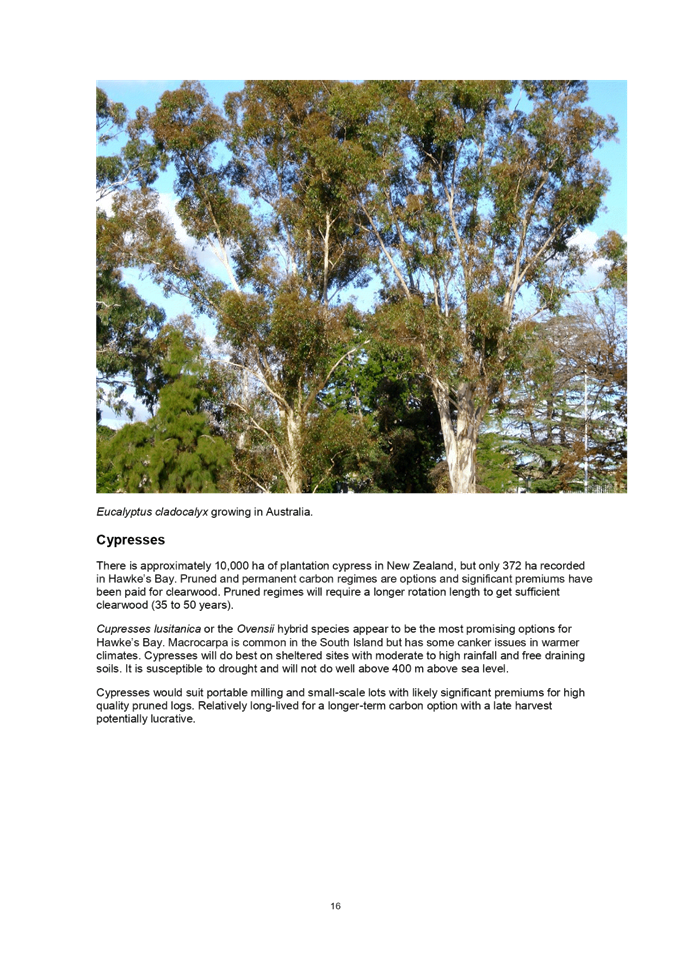
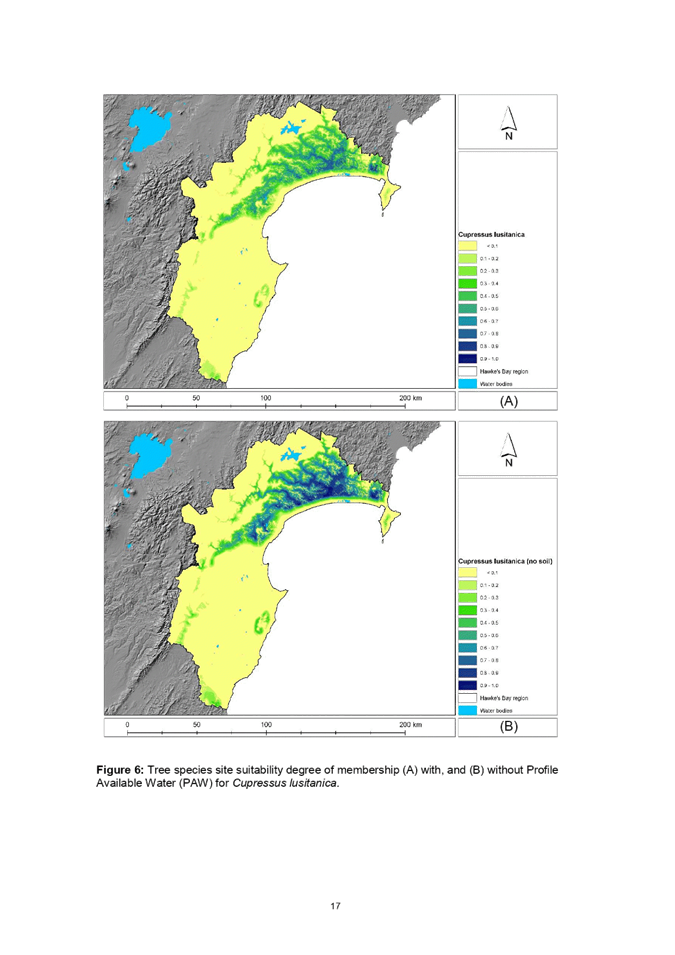

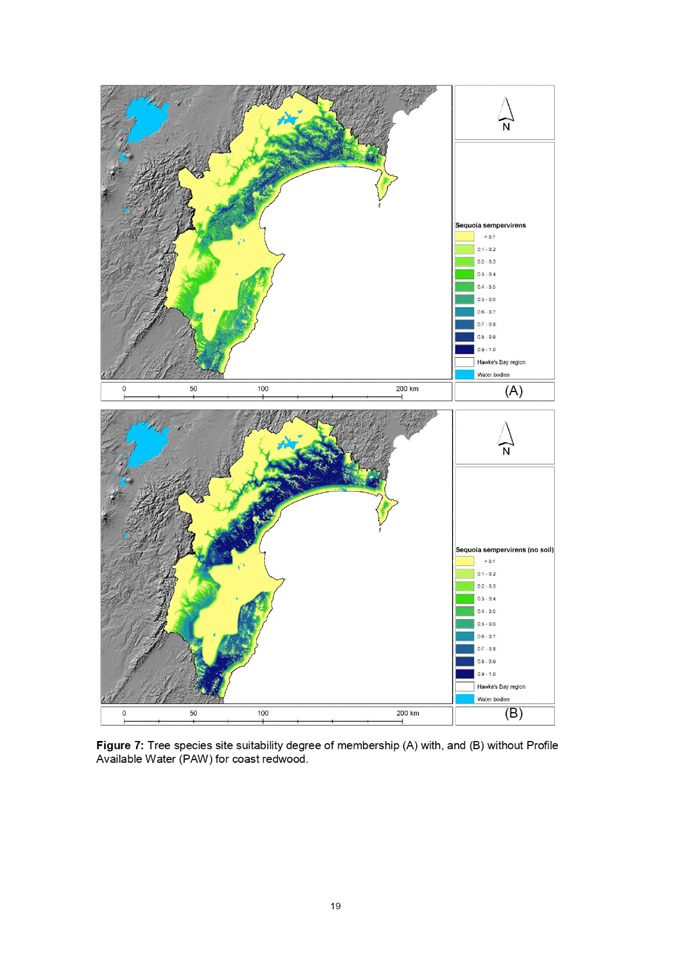
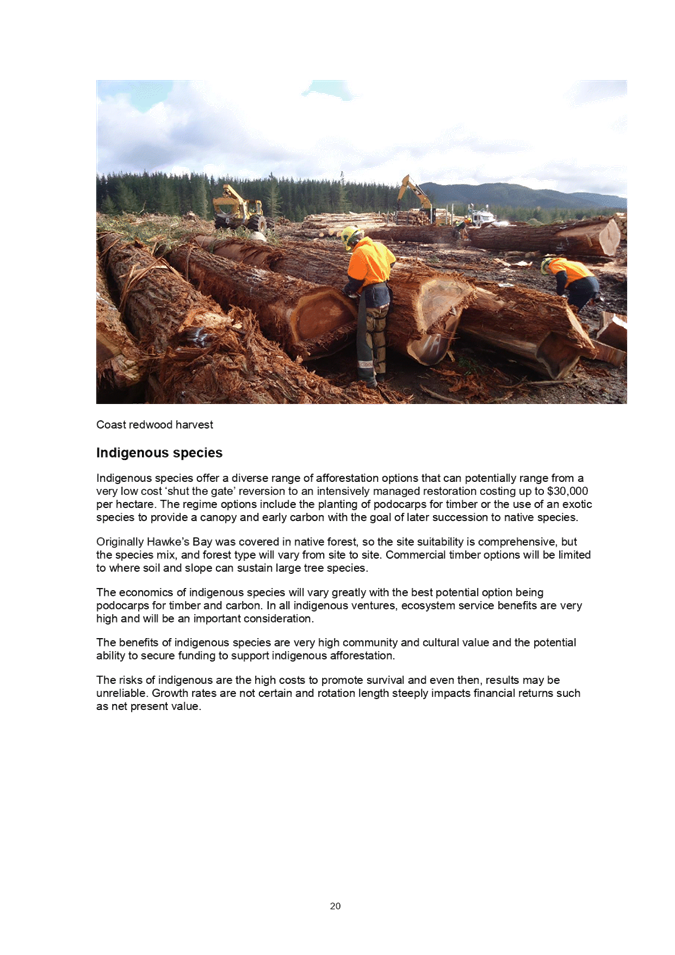
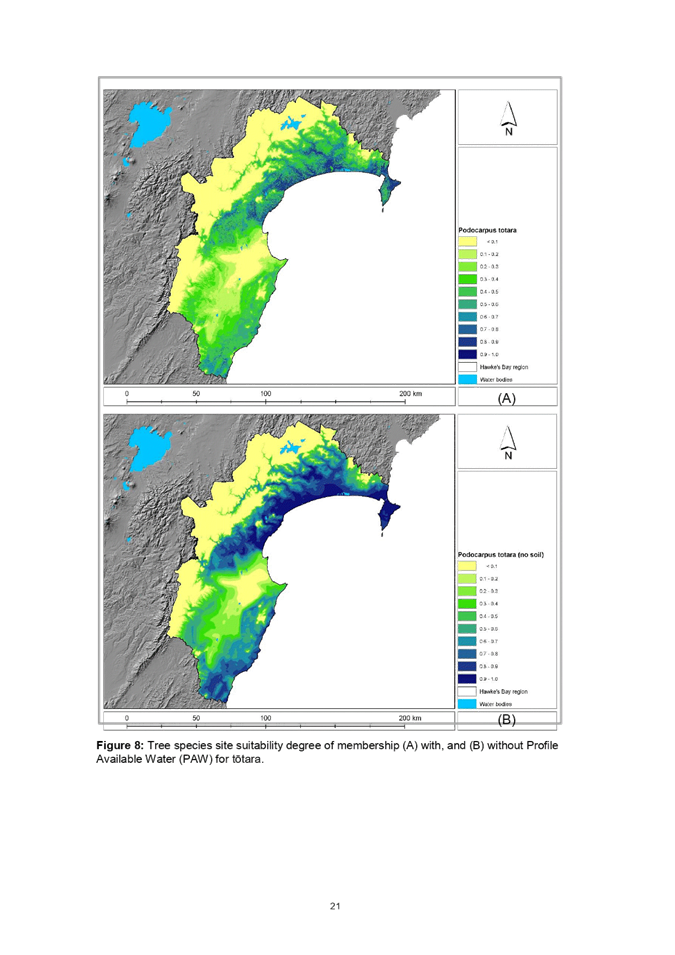

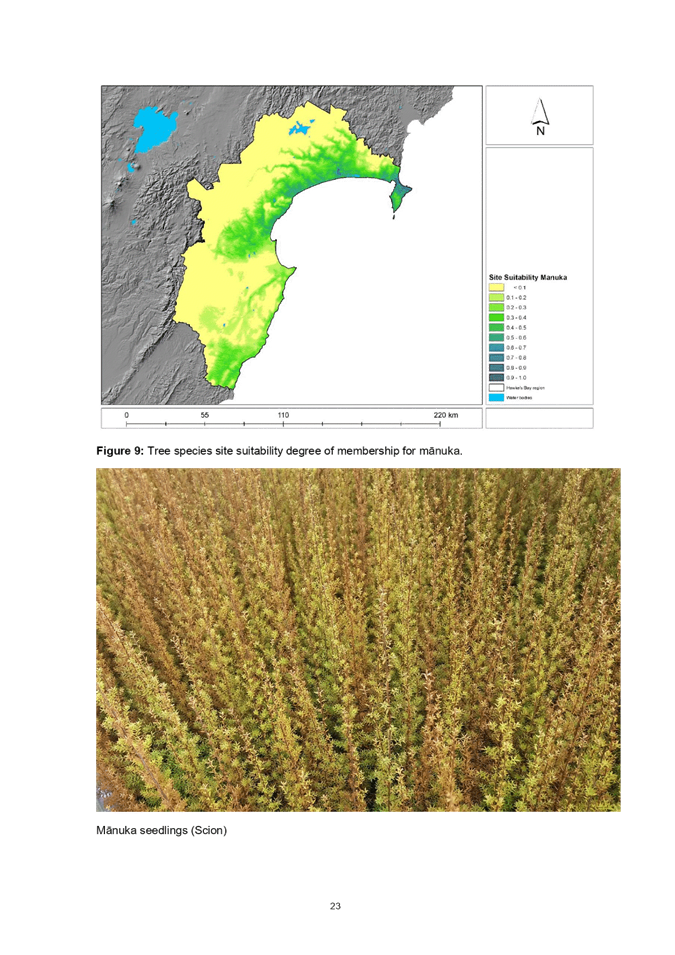
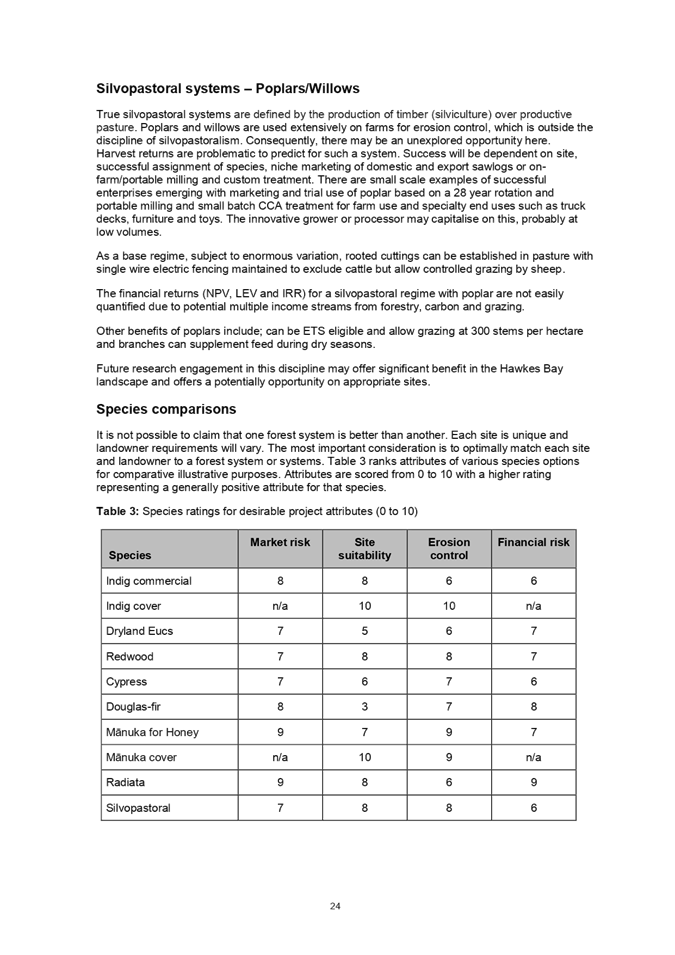
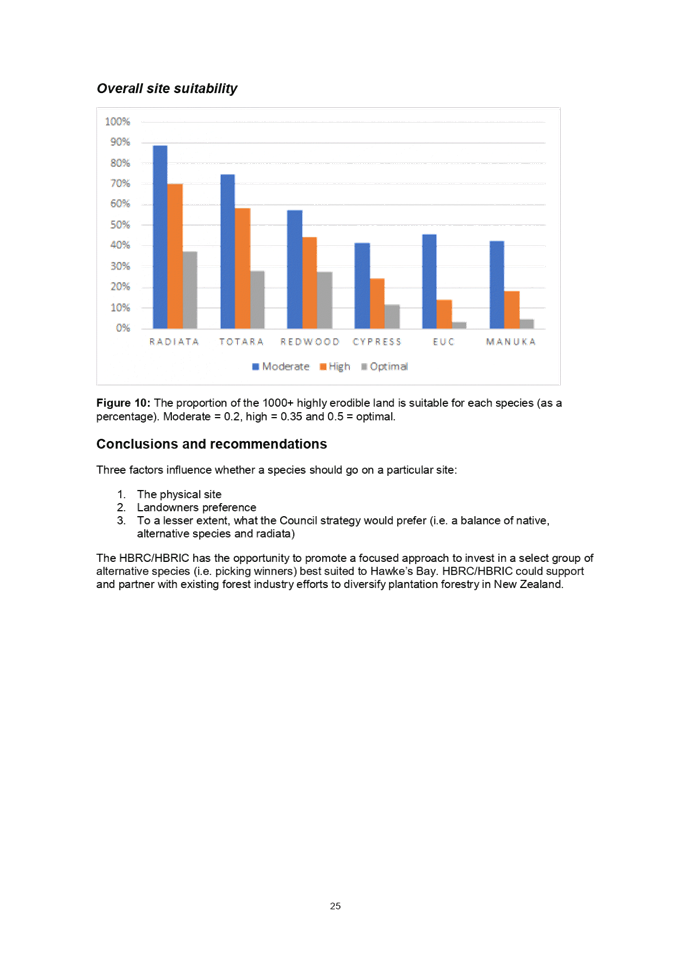
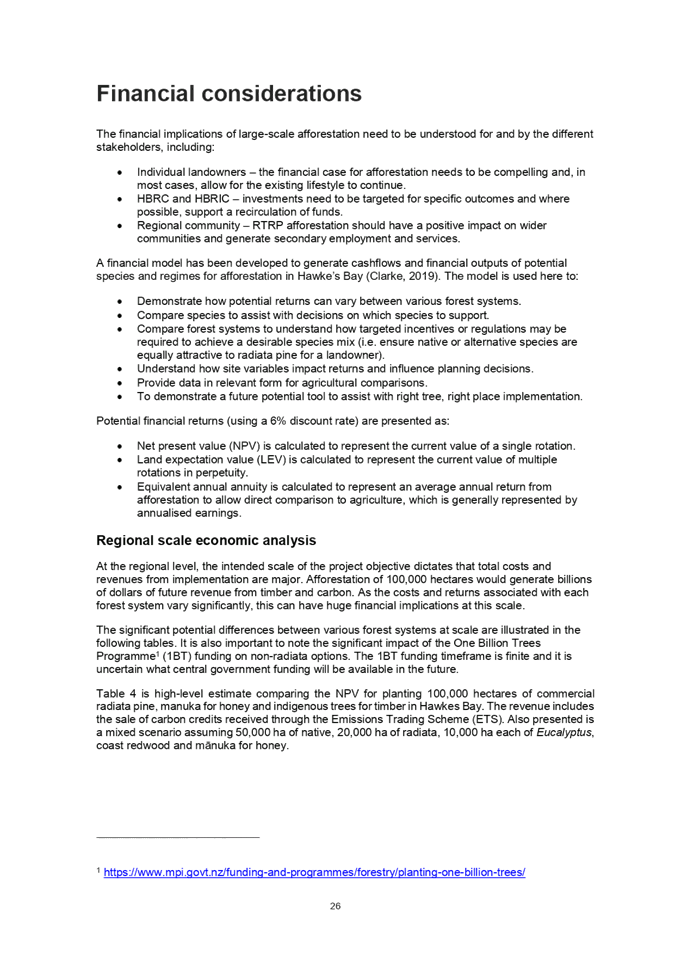
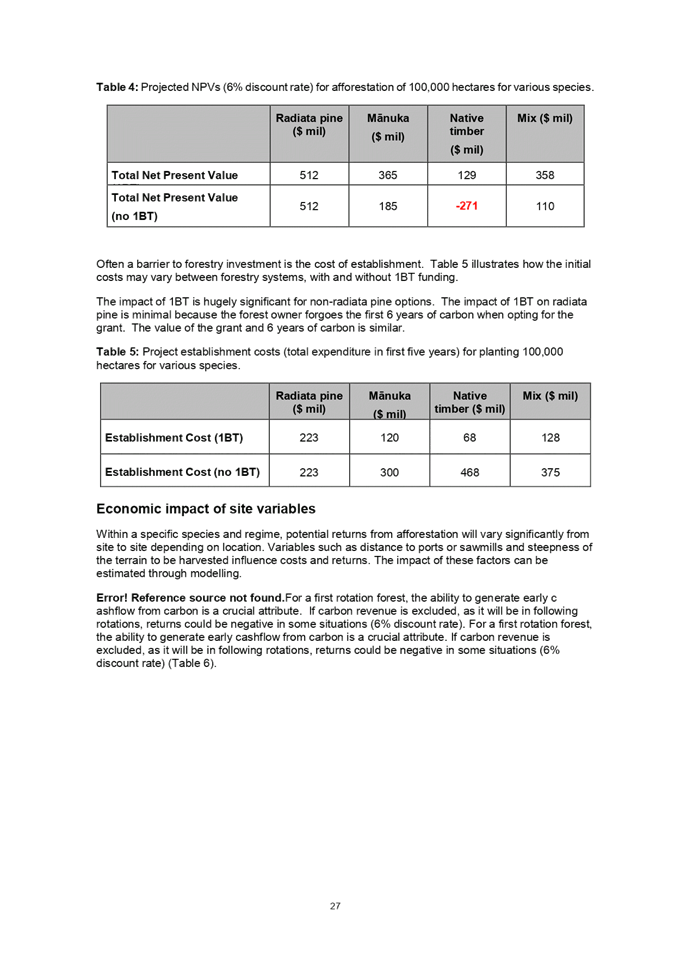
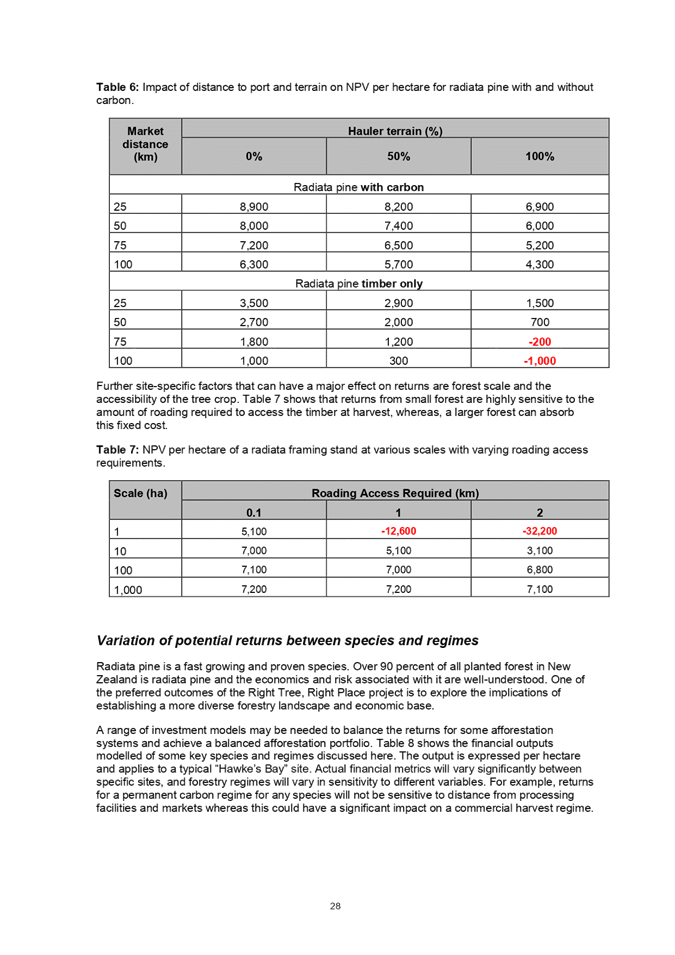
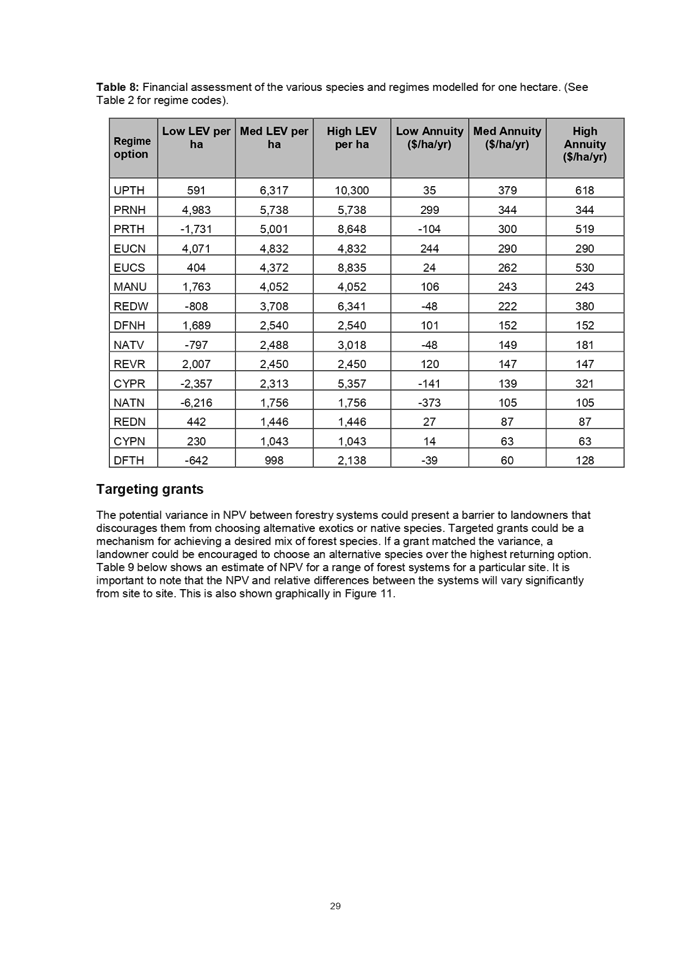
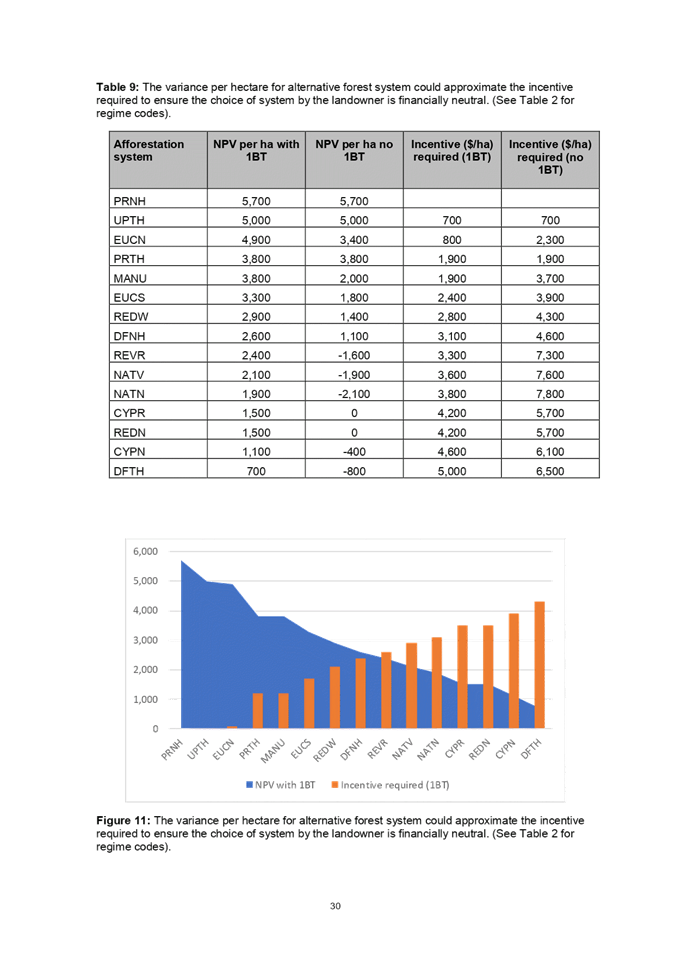
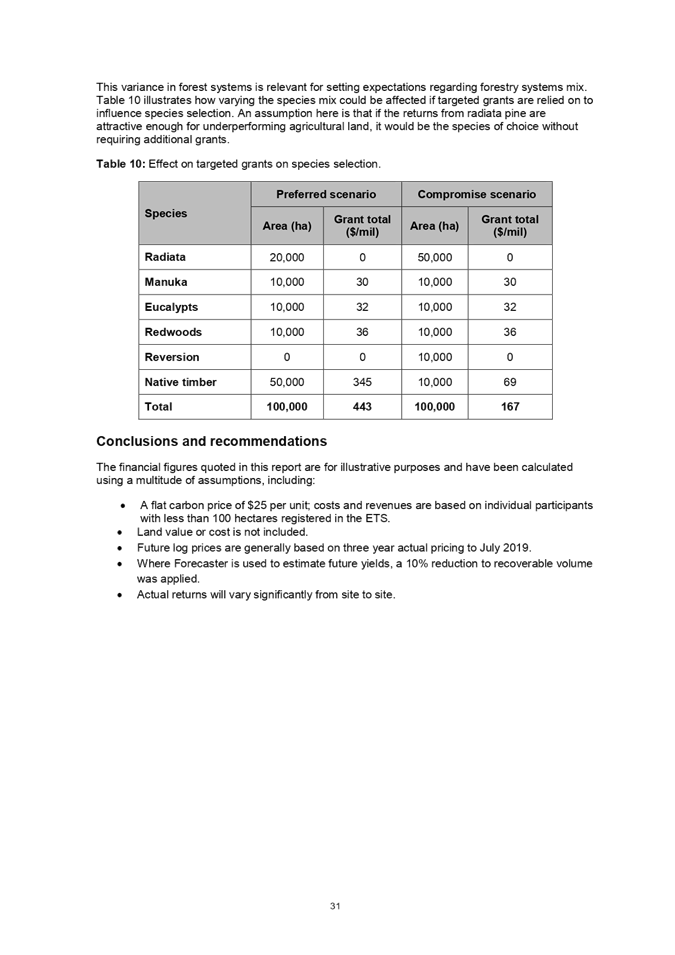
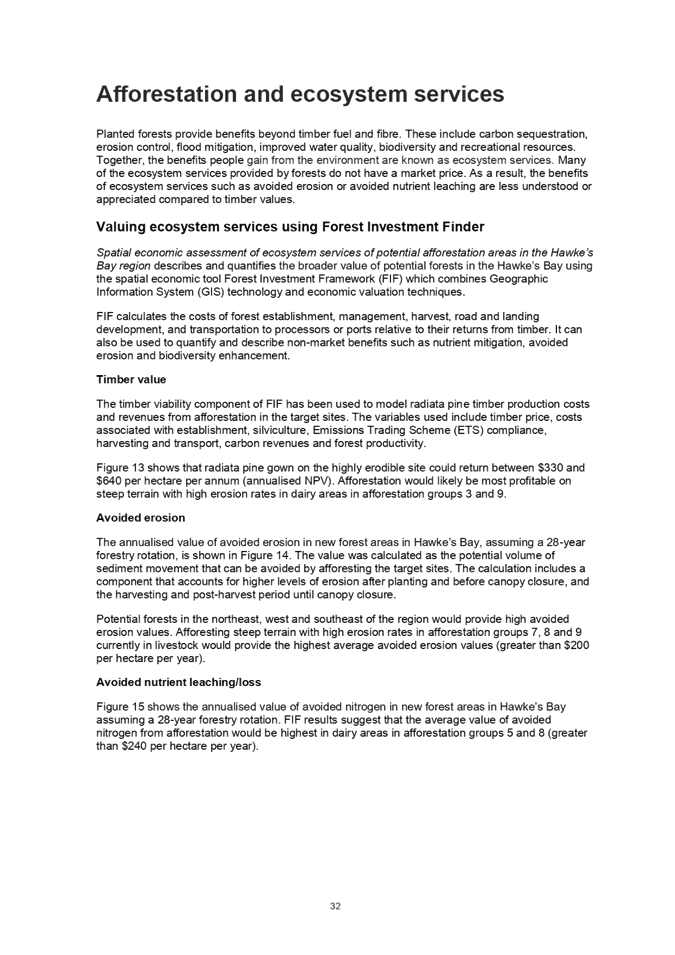
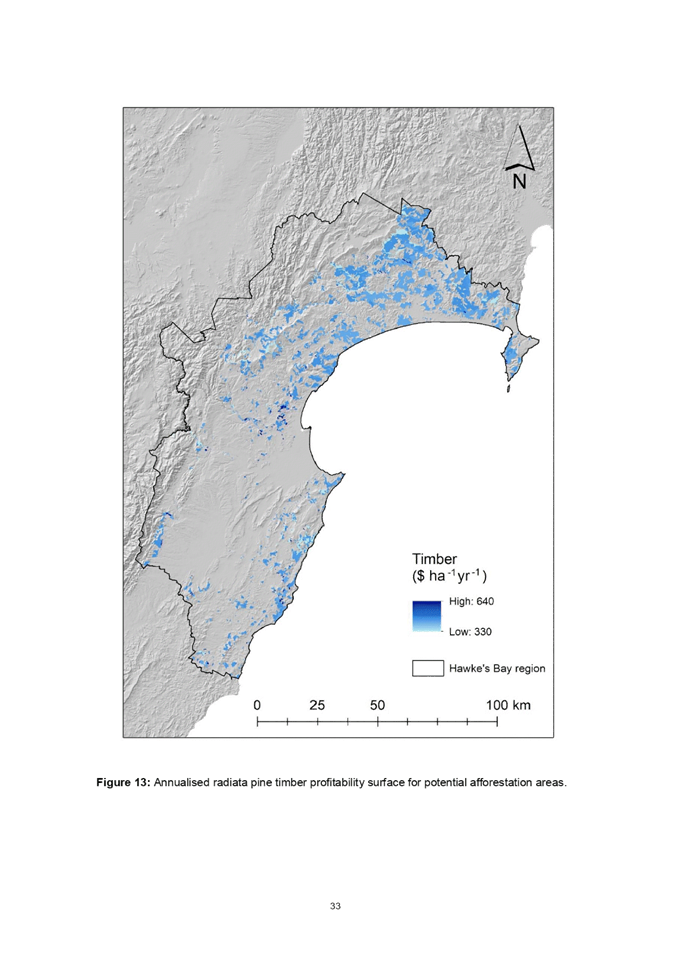
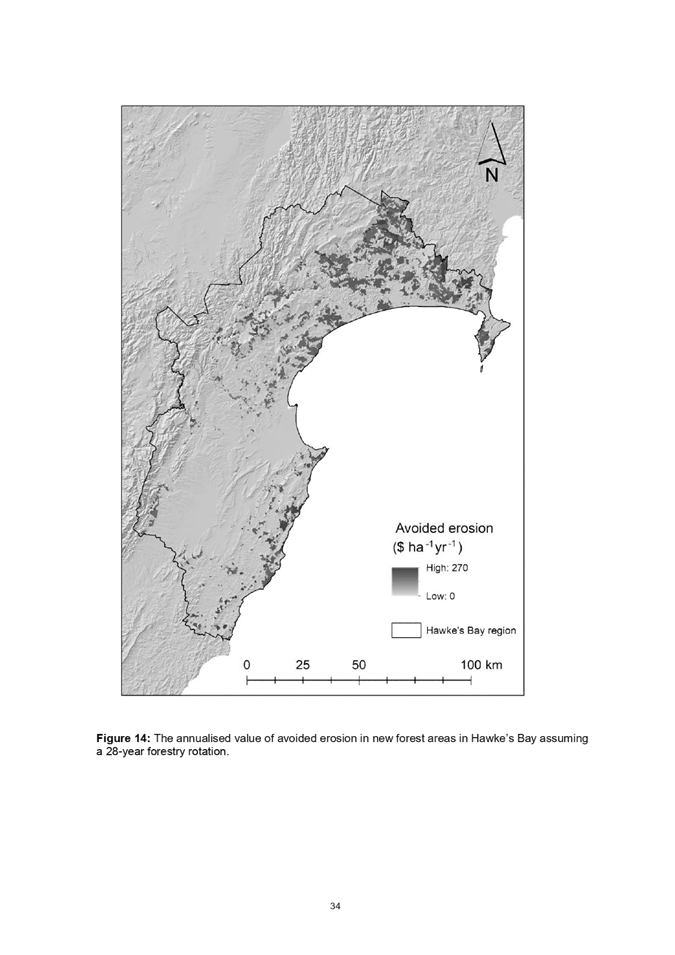

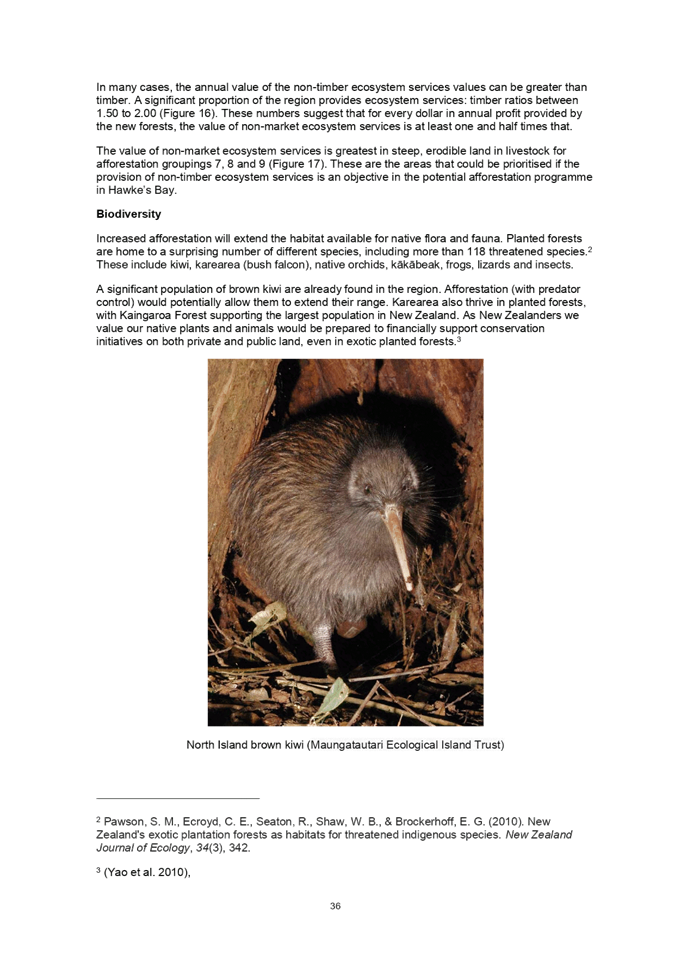

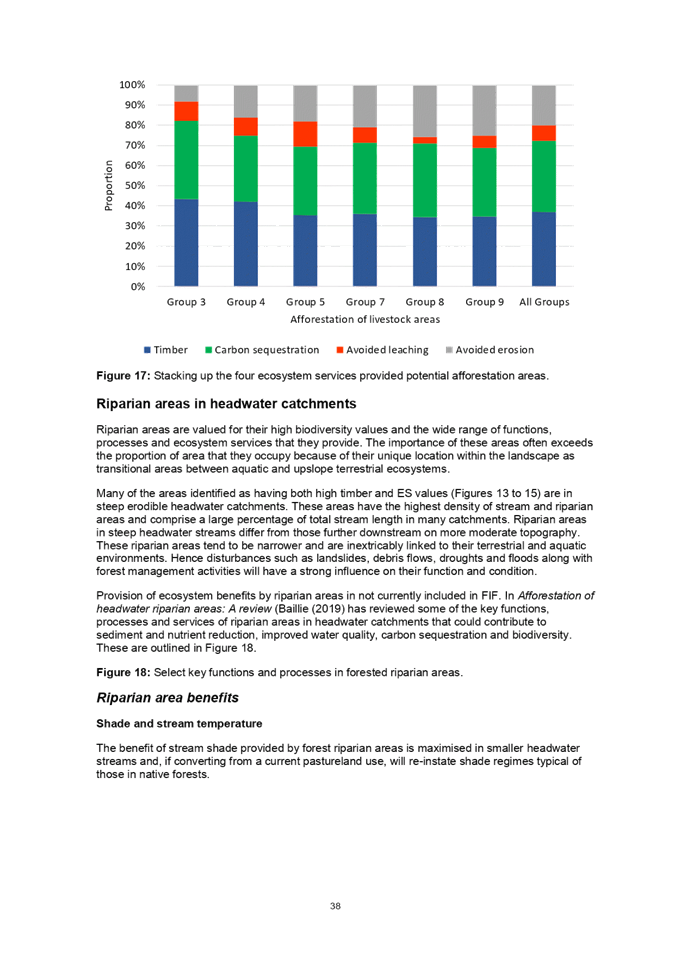
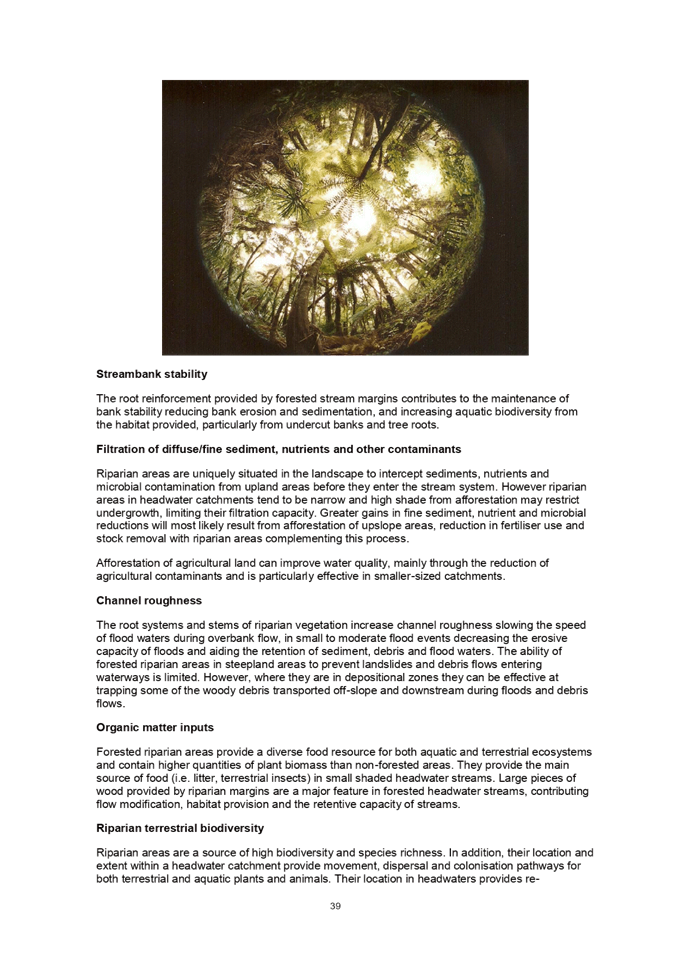
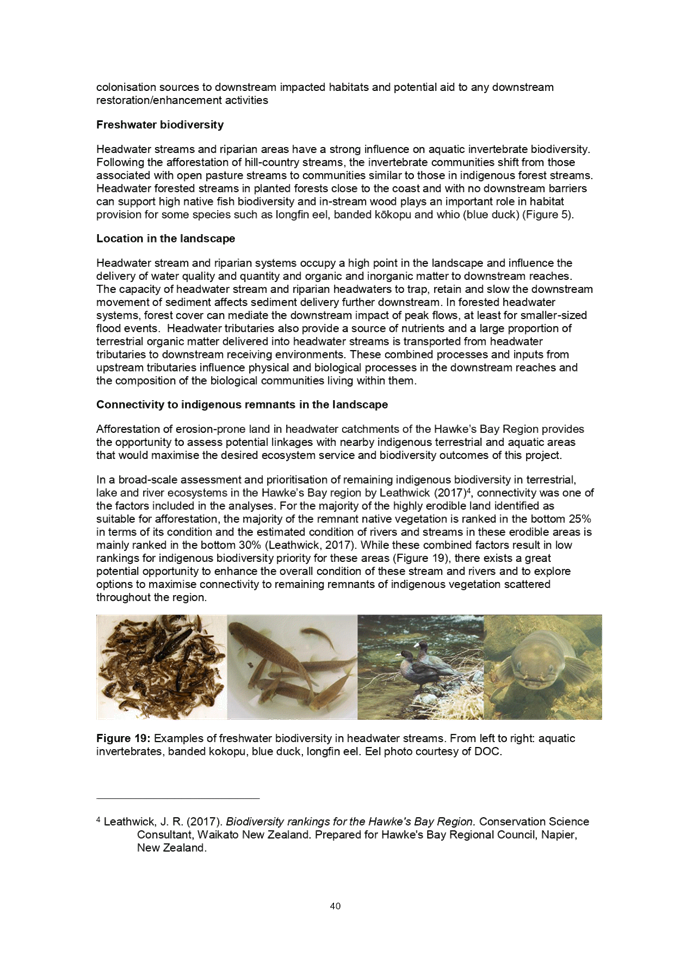
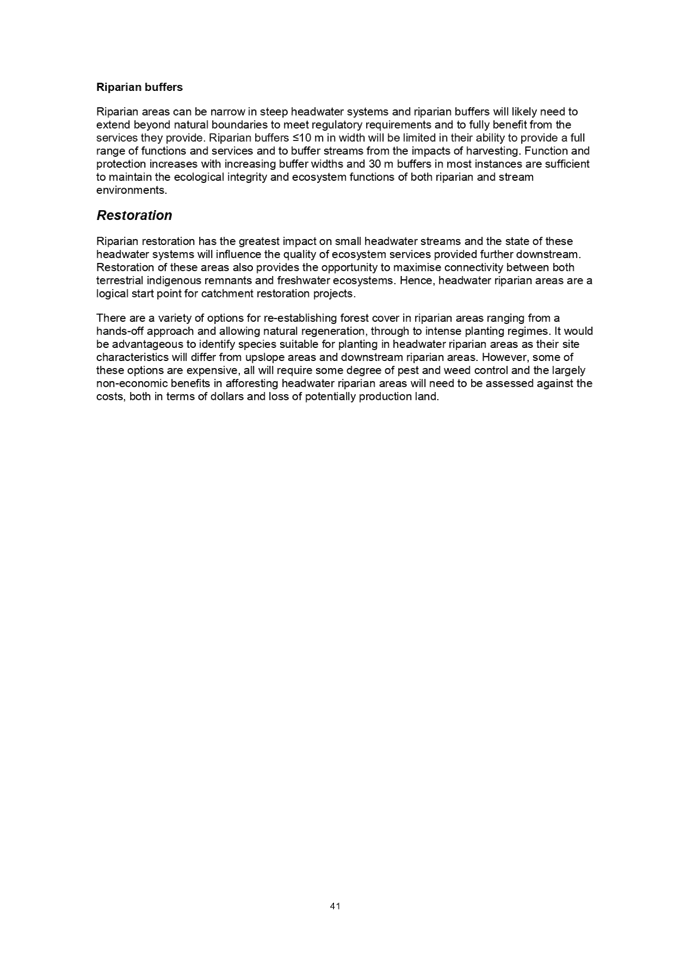

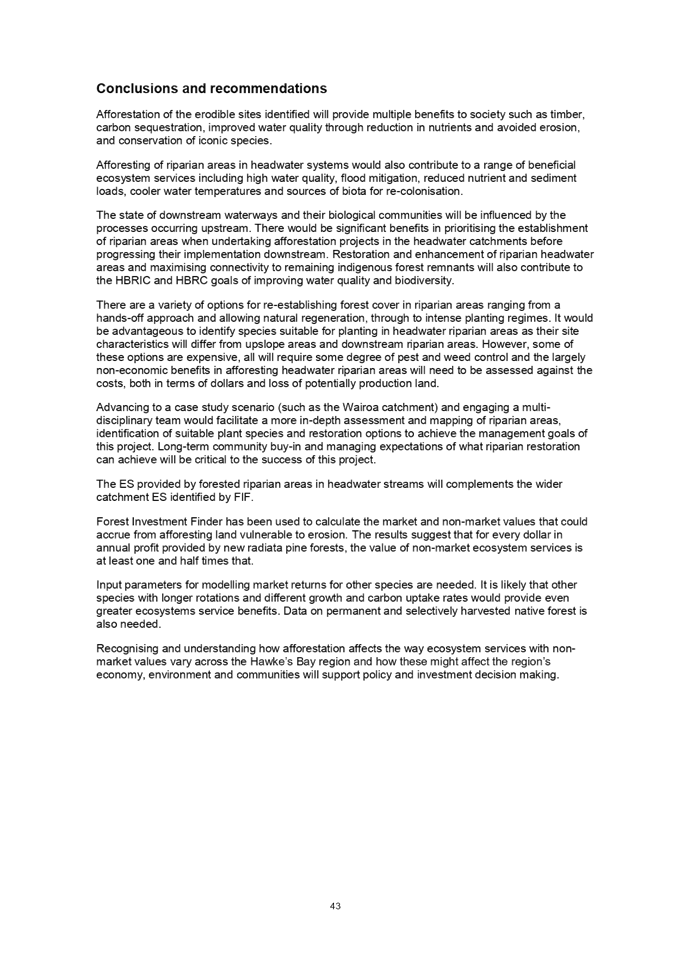
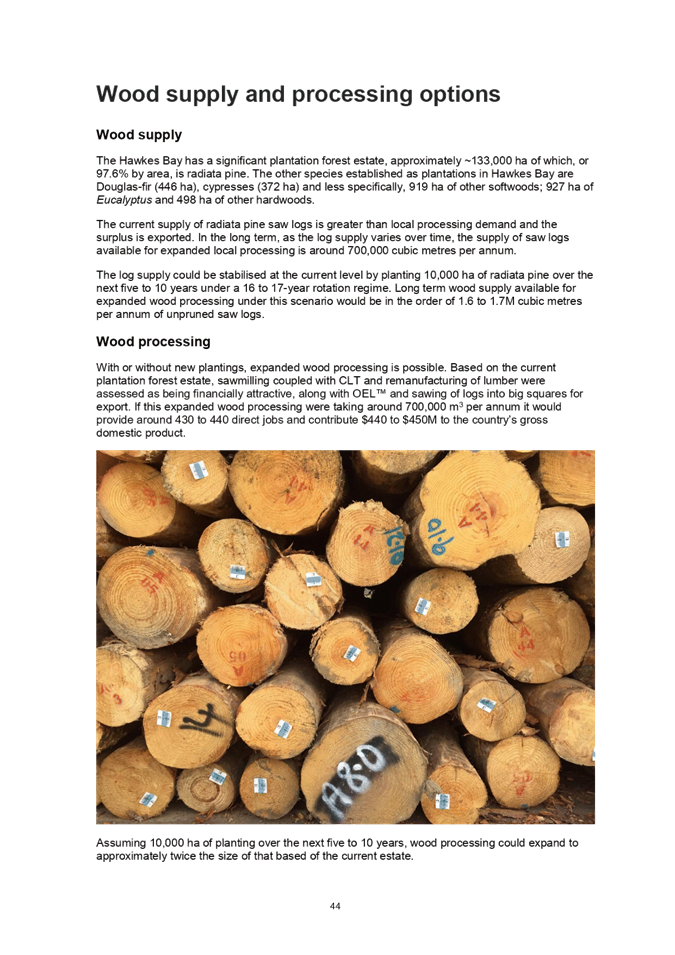



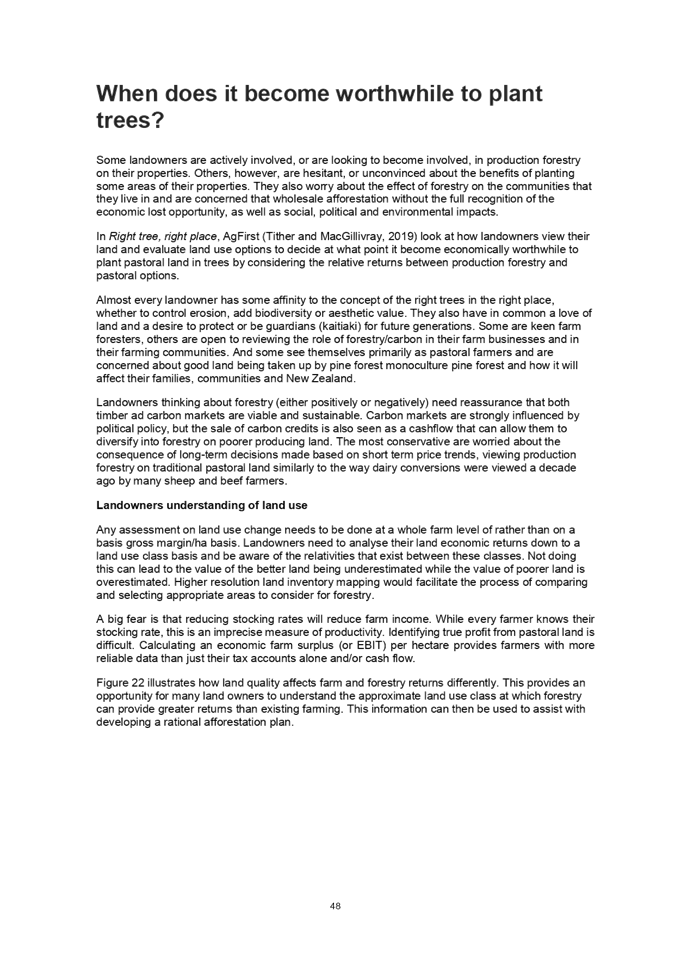
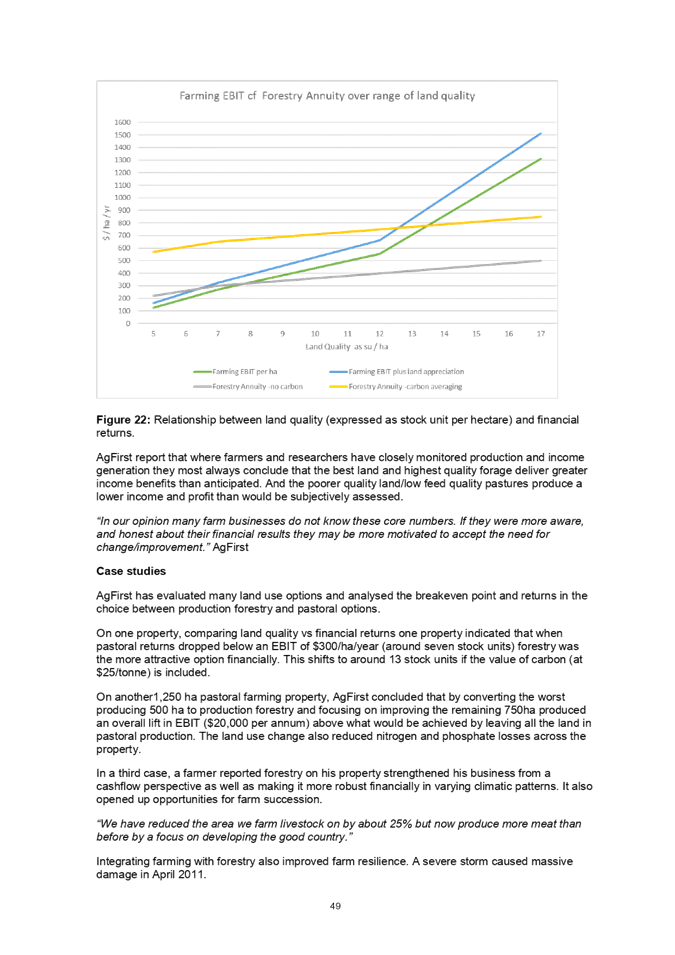

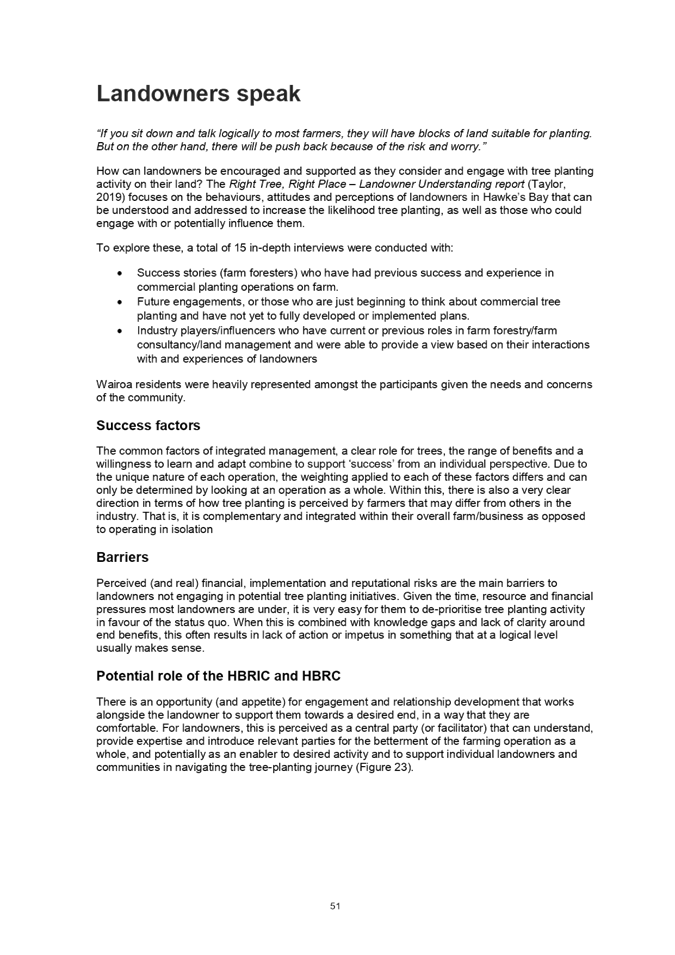
|
Right
Tree Right Place Summary Report
|
Attachment 1
|
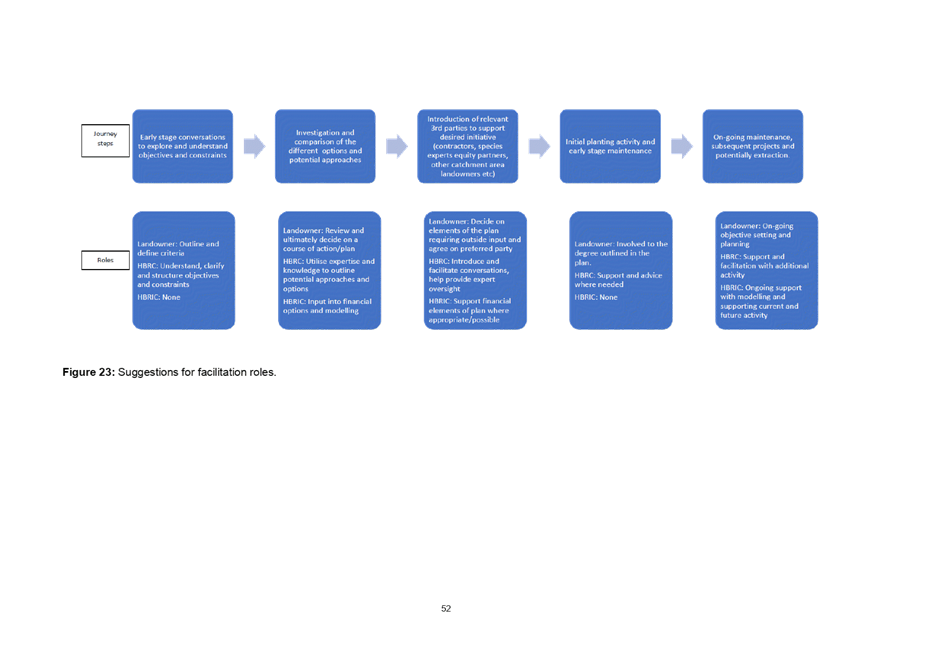
|
Right
Tree Right Place Summary Report
|
Attachment 1
|
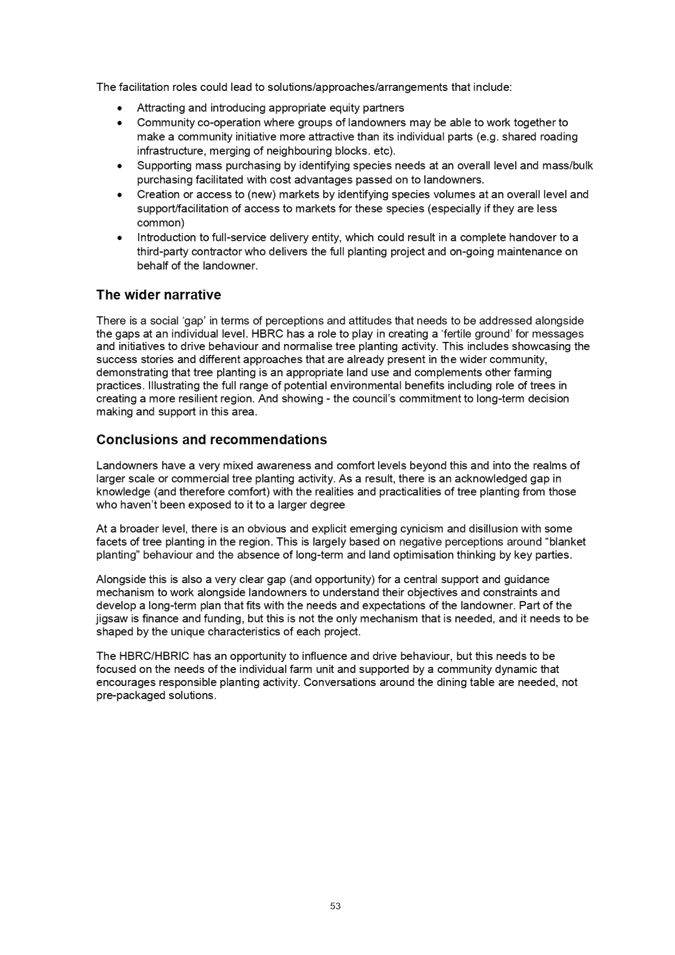
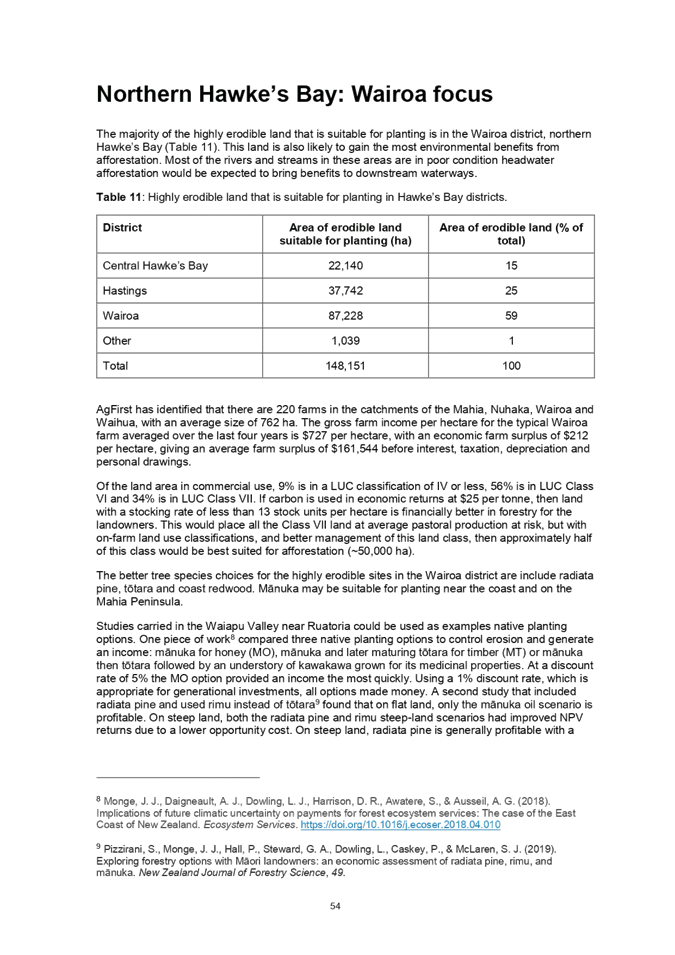

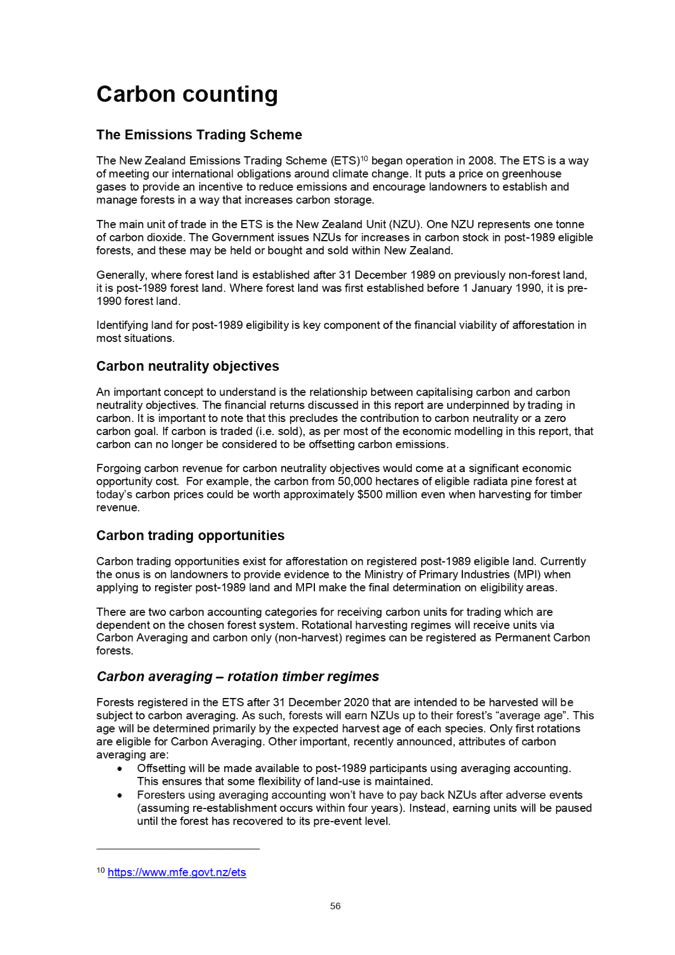
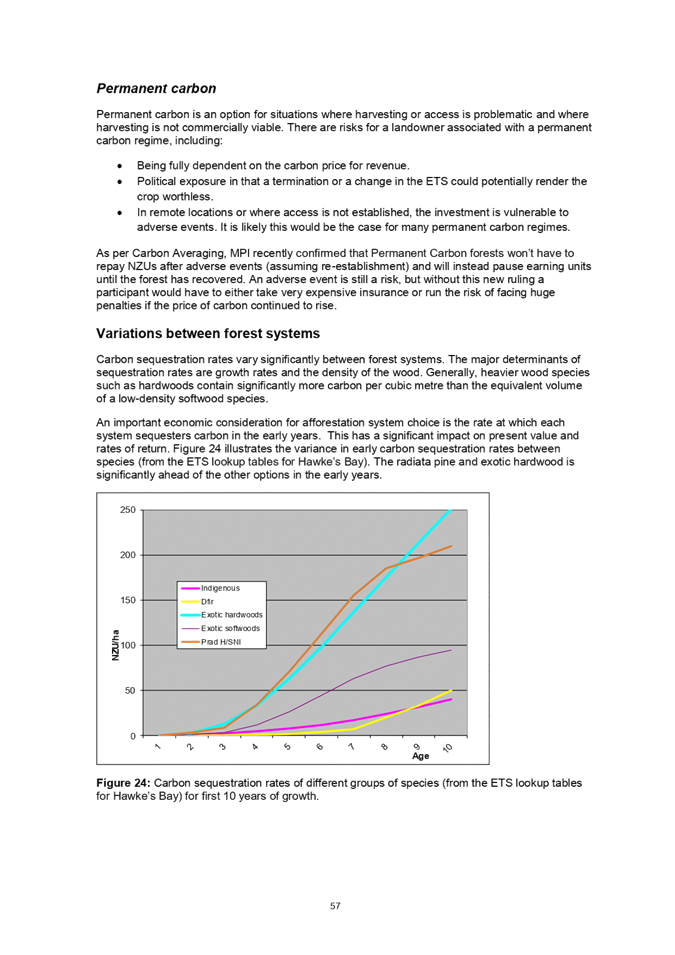
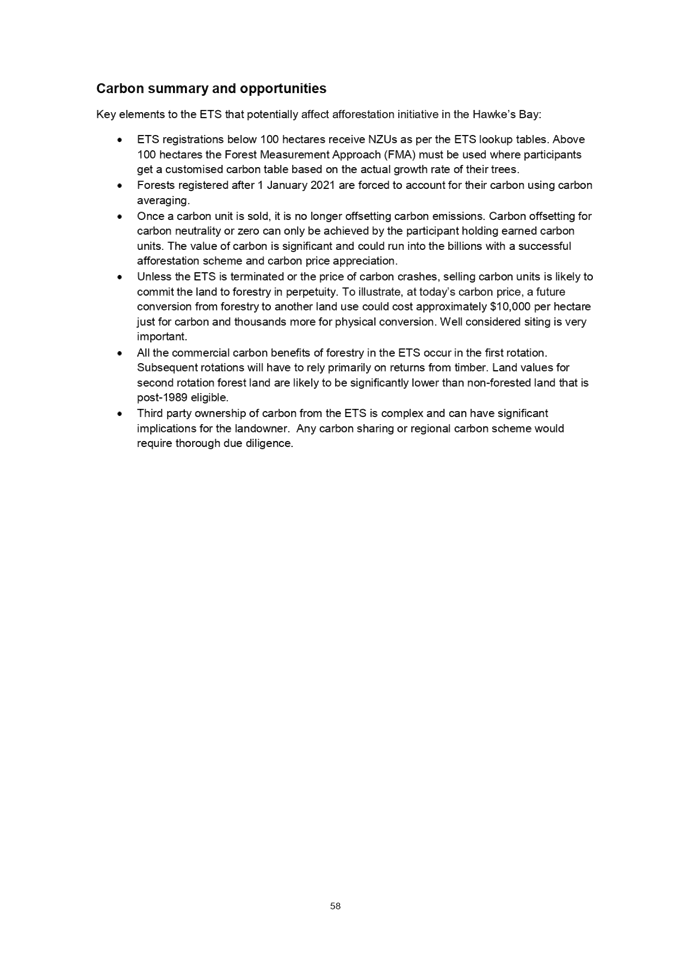
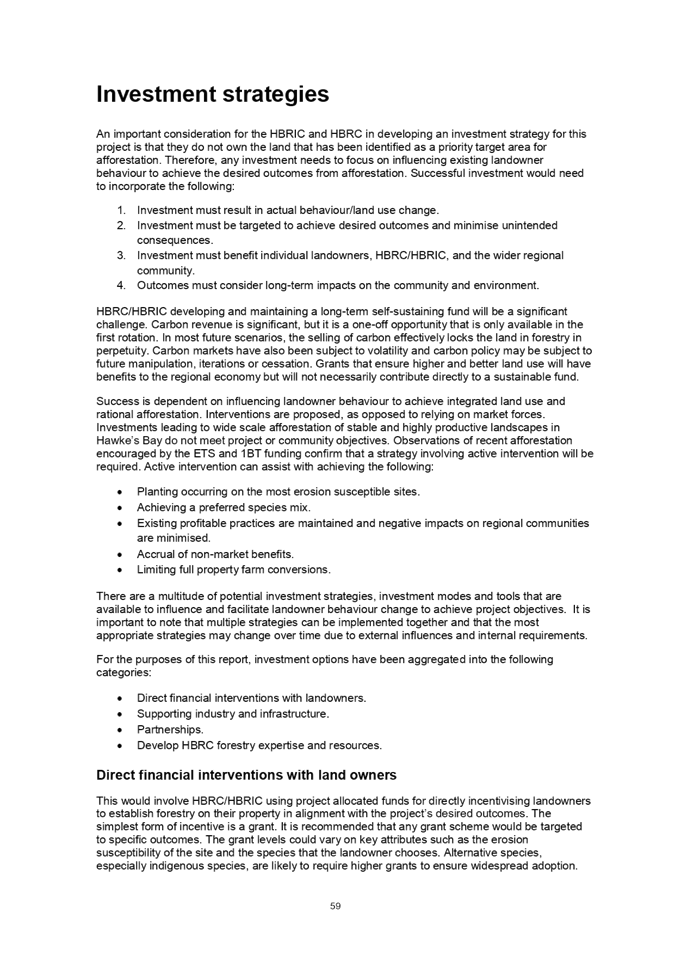
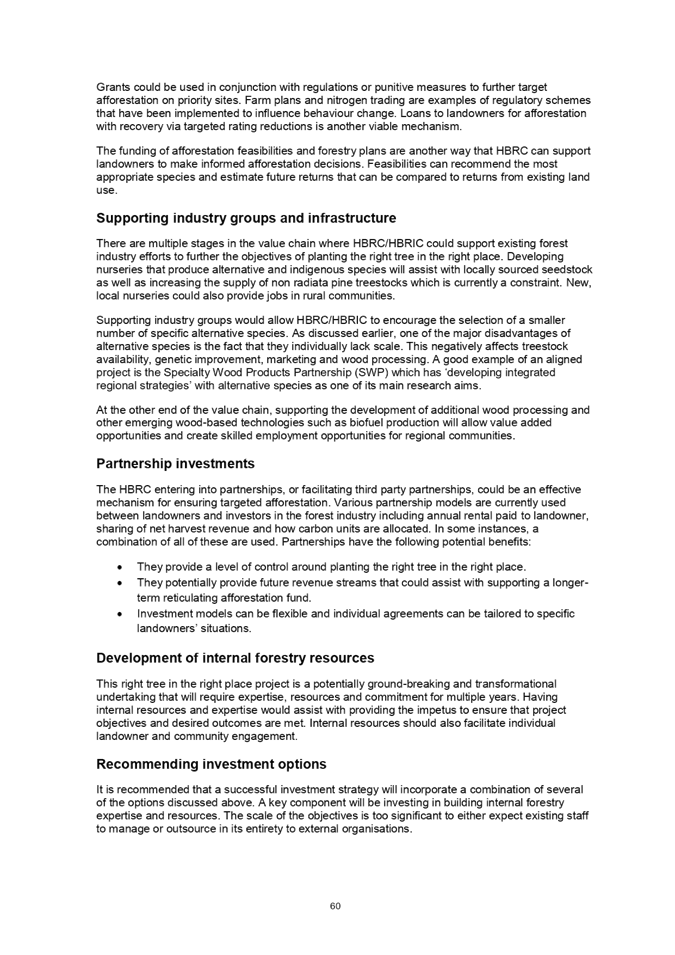
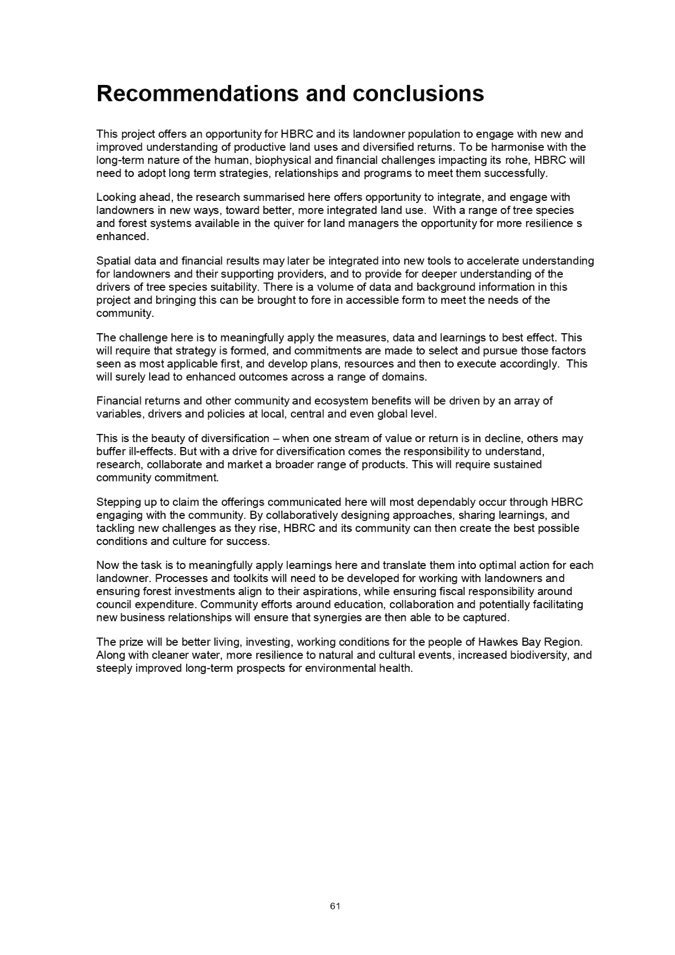
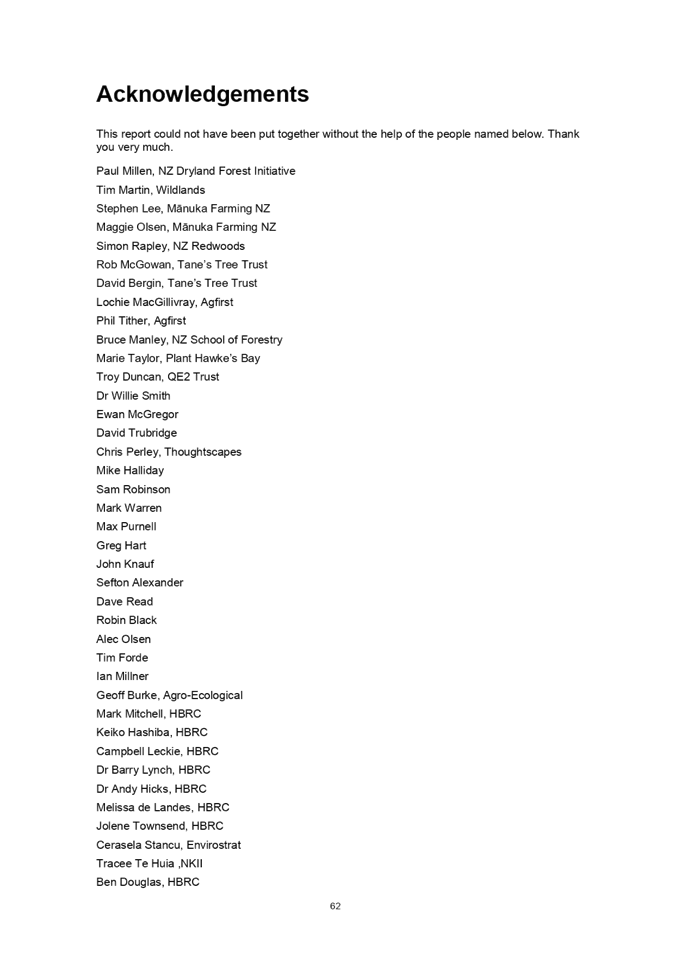

HAWKE’S BAY REGIONAL COUNCIL
Environment
& Integrated Catchments Committee
Wednesday 04 December 2019
Subject: Discussion of Minor
Items Not on the Agenda
Reason for Report
1. This document has been prepared to assist
Committee Members to note the Minor Items of Business
Not on the Agenda to be discussed as determined
earlier in Agenda Item 3.

































































